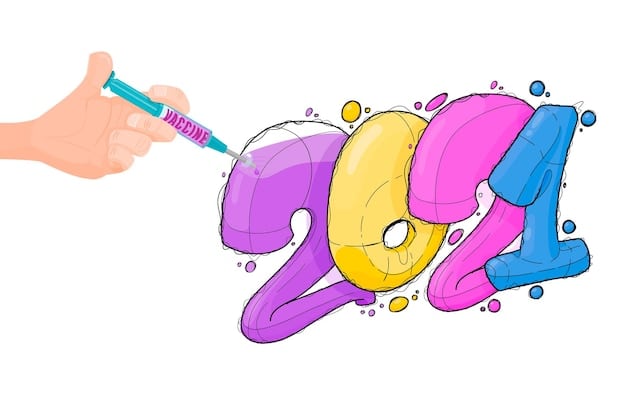Peyronie’s Disease: Treatment Options and Costs in the US

Peyronie’s disease is a condition causing curved and painful erections. Treatment options vary widely, ranging from medication and injections to surgical interventions, and the costs can differ significantly based on the chosen treatment and insurance coverage, with surgical options often being the most expensive.
Are you experiencing curved erections that cause pain and discomfort? You might be dealing with Peyronie’s disease: What Are Your Treatment Options and How Much Do They Cost? Let’s explore available treatments and their costs.
Understanding Peyronie’s Disease
Peyronie’s disease is a condition characterized by the development of fibrous scar tissue inside the penis. This leads to curved, and often painful, erections. The severity can range from mild to debilitating, significantly impacting sexual function and emotional well-being.
Men often become concerned when they notice changes in their penis, whether it be a new curvature or pain during erection. Understanding the underlying cause and available treatments is crucial for managing the condition effectively.
Causes and Risk Factors
While the exact cause remains unclear, several factors are believed to contribute to the development of Peyronie’s disease.
- Trauma: Minor injuries to the penis during sexual activity or other events may trigger the formation of scar tissue.
- Genetics: Some research suggests that genetic predisposition may play a role.
- Connective Tissue Disorders: Conditions like Dupuytren’s contracture (which affects the hands) may increase the risk.
It is important to note that Peyronie’s disease is not contagious or sexually transmitted. It is an acquired condition that can affect men of all ages, although it is more common in middle-aged and older men.
In conclusion, a combination of factors likely contributes to the formation of plaque and curvature of one’s penis, whether that curvature is severe or not. Understanding these possibilities is the important first step when examining Peyronie’s disease: What Are Your Treatment Options and How Much Do They Cost?
Non-Surgical Treatment Options
For men with mild to moderate Peyronie’s disease, non-surgical treatments may be effective in managing the condition. These options aim to reduce pain, improve curvature, and enhance sexual function. Here is a look at the options:
These treatments may be particularly appealing to men who are seeking less invasive treatments. While they may not completely eliminate the curvature, they can provide significant relief and improvement.
Medications
Several oral medications have been investigated for the treatment of Peyronie’s disease. However, their effectiveness has been variable.
- Pentoxifylline: This medication aims to improve blood flow and reduce inflammation. It may help to reduce pain and curvature but results vary significantly.
- Collagenase Clostridium Histolyticum (Xiaflex): While primarily used as an injection, it’s important to mention as it breaks down collagen, helping to reduce plaque size.
- Vitamin E: Previously thought to be beneficial, studies haven’t shown much efficacy for vitamin E in treating Peyronie’s disease.

Oral medications offer the convenience of easy administration, but their long term benefit for Peyronie’s disease: What Are Your Treatment Options and How Much Do They Cost? is always limited.
Injections
Injections directly into the plaque are a more targeted approach for delivering medication to the affected area.
- Collagenase Clostridium Histolyticum (Xiaflex): As mentioned above: this is injected directly into the plaque to help break it down. Several injections are needed.
- Verapamil: This calcium channel blocker may help to reduce pain and curvature by disrupting the formation of collagen.
Injections offer a way to directly target the scar tissue, but they also carry some risk of side effects such as pain at the injection site, bruising, and, in rare cases, penile hematoma.
Ultimately, injection as a treatment possibility for Peyronie’s disease: What Are Your Treatment Options and How Much Do They Cost?, may be a more focused solution on the plaque, since it is applied right to the troubled area.
Surgical Treatment Options
Surgical intervention may be considered for men with severe Peyronie’s disease who are not responsive to non-surgical treatments. These procedures aim to correct the curvature and restore sexual function.
Surgery is typically recommended only after the disease has stabilized (usually after 12 months since onset) and the curvature is severe enough to interfere with sexual intercourse.
Plication Procedures
Plication procedures involve shortening the longer side of the penis to straighten the curvature. These procedures are best suited for men with adequate penile length and mild to moderate curvature.
Plication procedures are the most viable solution to make sure the penis straightens properly, so it is important to explore as much as possible when analyzing Peyronie’s disease: What Are Your Treatment Options and How Much Do They Cost?
Grafting
Grafting involves making an incision in the plaque and inserting a graft to fill the defect. This procedure is typically reserved for men with more severe curvature or significant plaque size.
The long-term success of grafting depends on various factors, including the size and location of the plaque, the patient’s overall health, and the surgeon’s experience.
- Increased Length: Grafting may help to restore some length lost due to the curvature.
- Risk of Scarring: Grafts can introduce new scar tissue.
Penile Implants
Penile implants involve inserting inflatable or malleable rods into the penis to provide rigidity. This option is suitable for men with both Peyronie’s disease and erectile dysfunction.
While penile implants can effectively straighten the penis and restore sexual function, they are an irreversible procedure with potential complications such as infection, mechanical failure, and erosion.
Penile implants are also the only way to properly deal with erectile dysfunction, so it is often considered last amongst most patients, during the discussion about Peyronie’s disease: What Are Your Treatment Options and How Much Do They Cost?
Cost of Treatment
The cost of treating Peyronie’s disease can vary widely depending on the chosen treatment method, the severity of the condition, the location of treatment, and insurance coverage.
Understanding the financial implications of each treatment option can help men make informed decisions about their care. The costs mentioned are estimates, and it’s essential to consult with healthcare providers and insurance companies for personalized information.
Medications and Injections
The cost of oral medications such as pentoxifylline is generally affordable, ranging from $50 to $150 per month. Injections, such as collagenase or verapamil, can range from $500 to $1,500 per injection, and several injections may be required.
The prices may seem appealing but bear in mind that several sessions may be necessary before reaching the optimal final result.
Surgical Procedures
Surgical treatments for Peyronie’s disease are typically more expensive than non-surgical options. Plication procedures can range from $5,000 to $10,000, while grafting procedures may cost between $10,000 and $15,000. Penile implants are often the most expensive, ranging from $15,000 to $25,000 or more.

Insurance coverage can significantly impact the out-of-pocket expenses for surgery. It’s always prudent to clarify any financial aspects when discussing Peyronie’s disease: What Are Your Treatment Options and How Much Do They Cost? and your medical doctor.
Additional Costs
In addition to the direct costs of treatment, there may be other expenses to consider, such as:
- Consultation Fees: Initial consultation fees with urologists or sexual health specialists can range from $100 to $300 per visit.
- Diagnostic Tests: Diagnostic tests, such as ultrasounds or X-rays, may be necessary to evaluate the condition and guide treatment decisions. These tests can cost anywhere from $200 to $500.
- Post-Operative Care: Post-operative care, including follow-up visits, pain medication, and physical therapy, may add to the overall cost of treatment.
Navigating Insurance Coverage
Insurance coverage for Peyronie’s disease treatment can vary depending on the insurance plan, the specific treatment being pursued, and the medical necessity of the treatment. It’s crucial to understand your insurance policy and what it covers.
Some insurance plans may cover non-surgical treatments such as medications and injections, while others may require prior authorization or have limitations on the number of treatments covered. Surgical procedures are more likely to be covered if deemed medically necessary.
Men are thus advised to engage with their insurance providers, with the goal to avoid unpleasant surprises when discussing Peyronie’s disease: What Are Your Treatment Options and How Much Do They Cost?
- Pre-Authorization: Some treatments, particularly surgery, may require pre-authorization from the insurance company.
- Appeals: If a claim is denied, you have the right to appeal the decision.
Understanding your insurance coverage and advocating for necessary treatment can help to mitigate financial burdens. Patience and proactiveness is highly recommended too.
| Key Point | Brief Description |
|---|---|
| 🧐 Understanding Peyronie’s | Knowing causes, symptoms and risk factors can aid in early management. |
| 💊 Non-Surgical Options | Includes medication and injections to reduce curvature and pain. |
| 🔪 Surgical Interventions | Procedures for severe cases like plication and penile implants. |
| 💰 Cost Factors | Treatment costs affect decision-making involving insurance and personal finance. |
FAQ
▼
The exact cause is unclear, but trauma to the penis, genetic factors, and connective tissue disorders are potential contributors. These issues slowly build to form the plaque on the penis.
▼
Yes, oral medications like pentoxifylline and injections such as collagenase or verapamil is another option. These are used to break down scar tissue and reduce curvature, if applicable.
▼
Surgery is considered when non-surgical treatments fail, curvature is very painful, or impacts sexual function. Options include grafting or implants to improve rigidity.
▼
Costs vary. Medications can be $50-$150 monthly. Injections range from $500-$1500 per session. Surgery ranges from $5000-$25000+ depending on procedure. Speak to your medical provider.
▼
Insurance coverage varies by plan and treatment. Non-surgical methods may be covered and surgery requires pre-authorization. Check your policy or check with a medical doctor.
Conclusion
Dealing with Peyronie’s disease involves understanding the complexities of treatment options and costs, as well as insurance options. Working closely with healthcare providers will ensure you make the right decision toward restoring sexual health and overall well-being. Always check to what extent a treatment will be, whether the issues concern pain or penile curvature.





